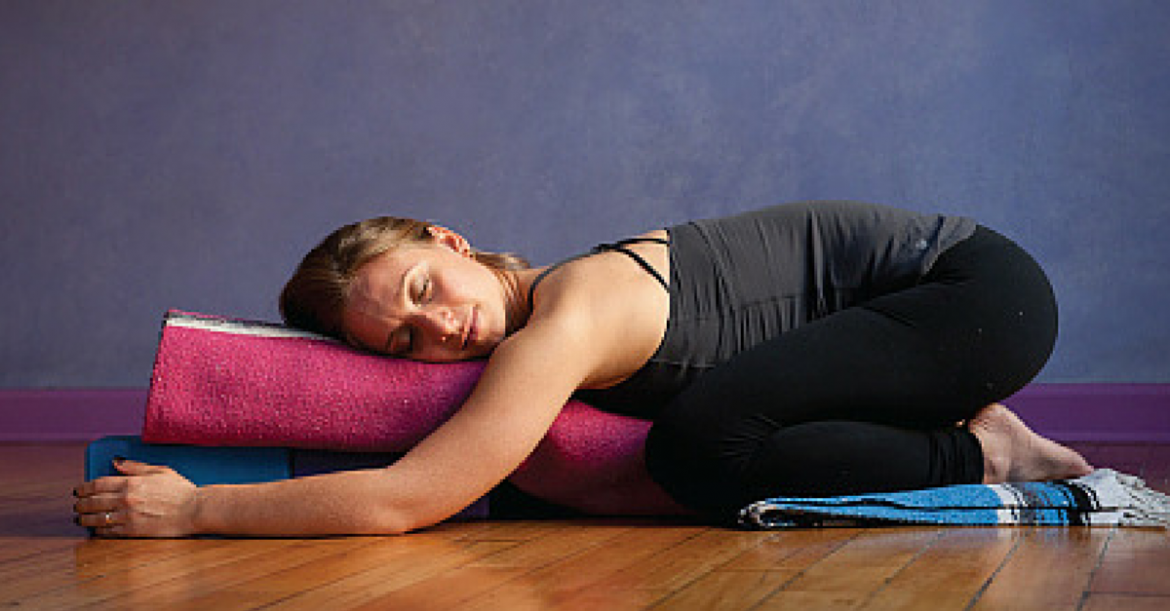I think the old phrase “No Pain, No Gain” expired at the turn of the millennium. And it definitely has no place in the practice of yoga! I confess, I see more faces of distress in my yoga classes than I do expressions of bliss, so perhaps it’s time to say it clearly: YOGA SHOULDN’T HURT!
Let’s make a specific distinction between pain and sensation. You will certainly feel your muscles stretch, and if flexibility is a challenge for you, that will bring you sensations such as trembling, heat, and tiredness. While holding a pose, you may feel like a muscle is in deep contraction or that a joint feels tight because it hasn’t been asked to open that way before. And, certainly, after a yoga class you will feel sore. But soreness should be associated with hard work, muscle fatigue and something that feels remotely “satisfying.” If at any point you feel sharp, shooting pain or a feeling that makes you feel injured or very unstable, you should abandon that movement immediately.
In many ways you need to “find your edge,” just as you would in a sport. Can you find the space between too little effort where there is no growth and too much effort expended where we often encounter aggression? One of yoga’s most powerful principles is called “Ahimsa” or “Non-Violence.” It says that a life that is peaceful and happy must be synonymous with a life that is non- violent, and that starts with our own self, both body and thoughts.
So, it’s ironic that the practice of physical yoga often stimulates intense feelings from our ego: aggression, anger, frustration and most definitely, judgment (I can’t believe you didn’t balance, you always used to be able to balance. What an idiot! My darn leg is giving out AGAIN- what is wrong with me? When did I get fat/weak/distracted/old etc). Does any of this sound like a familiar internal monologue? These are the brain streams usually accompanied by loud grunting and angry, tight faces in my classes. And of course, we’ve all been there.
What we’re looking for is an experience where we can accept the process as the journey and not the destination. When experiencing a pose, notice how your body and breathing responds, don’t beat yourself up by going beyond what you can actually do that day. If we give ourselves the room to try something new without aggression, we are generally surprised at the breakthroughs (big and small) that happen on a regular basis. I’ve seen plenty of yoga newbies be able to touch their toes for the first time, get rid of back pain they’ve been plagued with for years and be able to approach all aspects of their life with less aggression. These are all shifts that happen and are absolutely possible as the yoga practice becomes more integrated with patience, compassion, and yes, non-violence!
If we’re talking about self- compassion and kindness towards the self, I have to throw in the yoga favorite, “Child’s Pose.” Come to all fours (hands and knees). Allow your hips to sink back to your heels (toes un-tucked). Your knees can spread to the sides a bit, allowing your hips to open. Crawl your arms out in front of you, or by your sides, and allow your forehead to rest on the floor. As shown in the picture above, you can make the pose even more gentle, but rolling up a blanket under your belly and giving a nice cushy platform for your face. Take deep breaths here for as long as you like, feeling your body naturally open and relax, not because you’re forcing it to, but because you’re giving yourself over to the pose and all of its benefits!
Enjoy and be kind to yourself. You’re the only one you’ve got!
 Food
Food Farmers
Farmers Sustainable Living
Sustainable Living Living Planet
Living Planet News
News